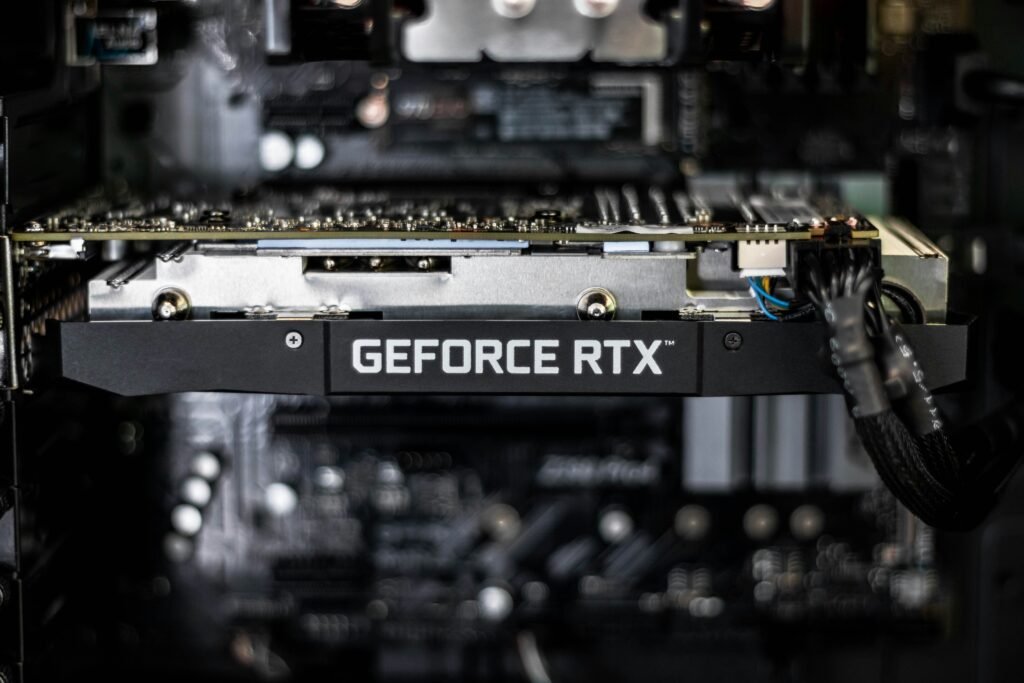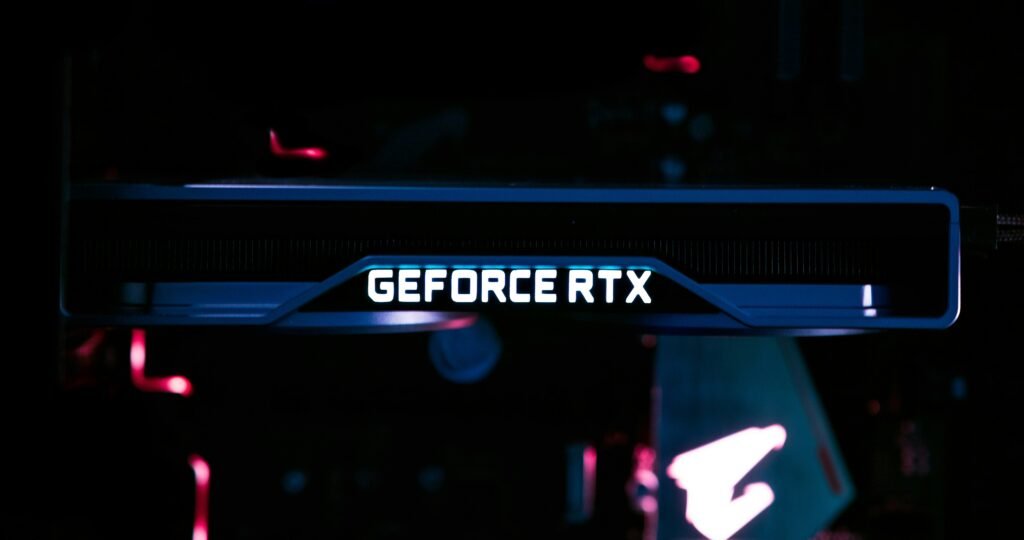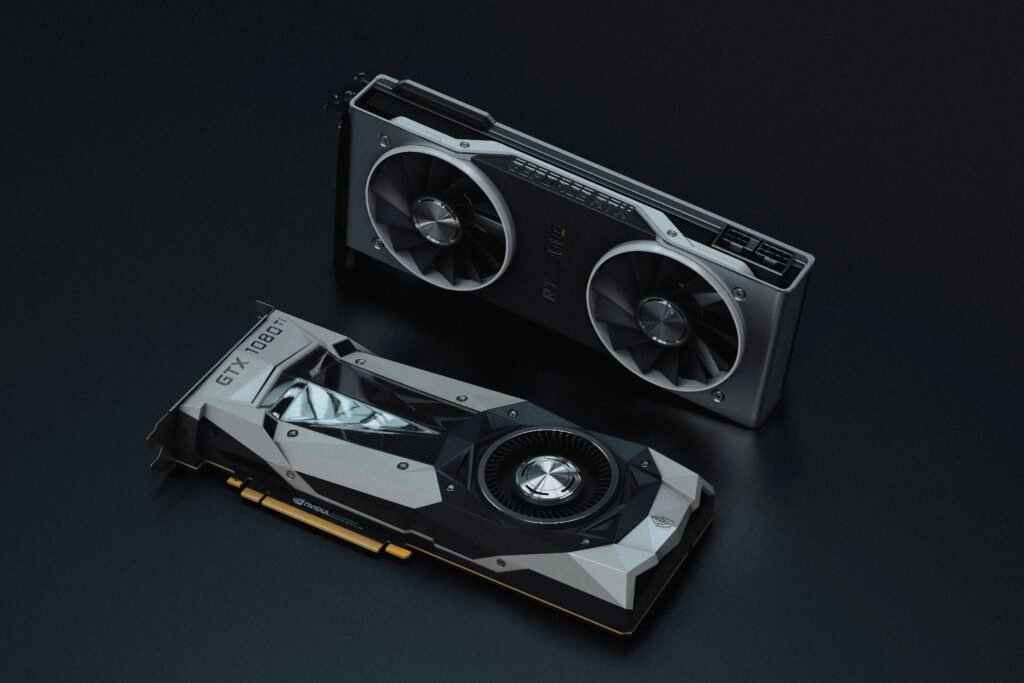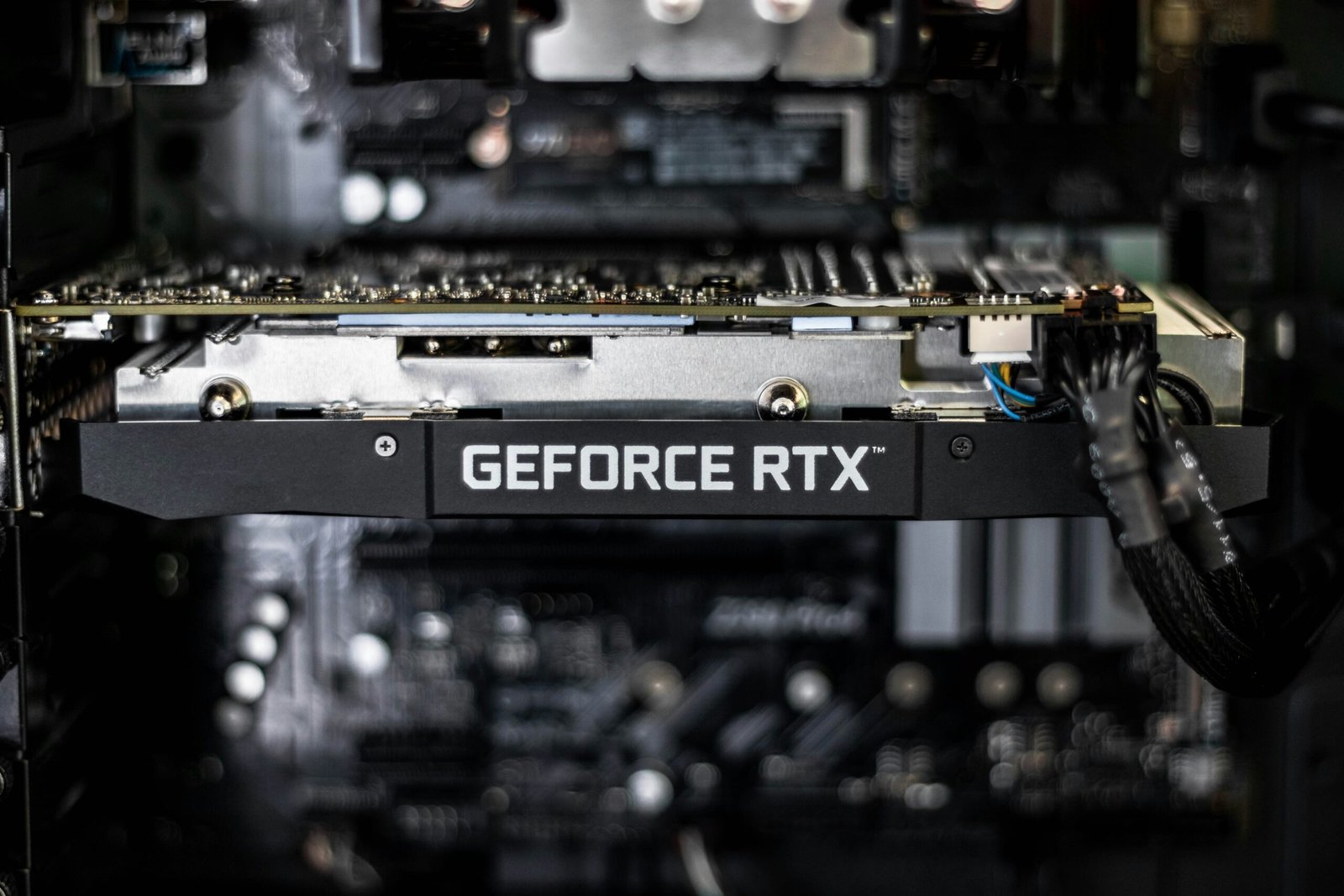In today’s rapidly advancing world of technology, it’s crucial to stay up to date with the latest trends and advancements in laptops. One particular aspect of laptops that often gets overlooked is the graphics card options available. Your laptop’s graphics card is responsible for delivering stunning visuals and smooth gaming experiences. Whether you’re a casual user or a hardcore gamer, understanding the different graphics card options can greatly enhance your laptop’s performance. Join us as we explore the world of laptop graphics cards and discover how they can elevate your computing experience to new heights.
Integrated Graphics Cards
Definition
Integrated graphics cards, also known as integrated GPUs (Graphics Processing Units), are built-in graphics solutions found in most laptops and desktop computers. Unlike dedicated graphics cards, which have their own dedicated video memory (VRAM), integrated graphics cards utilize a portion of your computer’s system memory to handle graphics processing tasks.
Performance
Integrated graphics cards are generally less powerful than dedicated graphics cards, as they rely on the computer’s main processor (CPU) and system RAM for graphics processing. This means that they are suitable for basic tasks such as web browsing, office productivity, and multimedia playback, but may struggle with demanding graphics-intensive applications such as modern video games or professional software.
Advantages
One of the main advantages of integrated graphics cards is cost. Since they are integrated into the computer’s motherboard, they do not require additional hardware and are therefore more affordable compared to dedicated graphics cards. Integrated graphics cards also tend to be more energy-efficient, resulting in longer battery life for laptops.
Disadvantages
The main disadvantage of integrated graphics cards is their limited performance capabilities. They are not designed for heavy gaming or resource-intensive graphical applications. Additionally, integrated graphics cards cannot be upgraded like dedicated graphics cards, as they are integrated into the motherboard. This means that if you need higher graphics performance, you will need to replace the entire computer or add an external dedicated graphics card.
Dedicated Graphics Cards
Definition
Dedicated graphics cards, also known as discrete graphics cards, are separate hardware components that are specifically designed for graphics processing. Unlike integrated graphics cards, dedicated graphics cards have their own dedicated VRAM and a more powerful GPU, making them better suited for graphics-intensive tasks.
Performance
Dedicated graphics cards offer significantly better performance compared to integrated graphics cards. They can handle demanding tasks such as gaming, video editing, 3D modeling, and rendering with ease. Dedicated graphics cards are equipped with their own dedicated VRAM, which allows for faster data transfer and better overall performance.
Advantages
The main advantage of dedicated graphics cards is their superior performance. They are capable of delivering high-quality graphics, smoother gameplay, and faster rendering times. Dedicated graphics cards also offer support for advanced features such as Virtual Reality (VR) and 4K resolution, providing an immersive visual experience.
Disadvantages
Dedicated graphics cards are generally more expensive than integrated graphics cards. They also consume more power, which can lead to decreased battery life for laptops. In addition, dedicated graphics cards tend to generate more heat, requiring proper cooling solutions to prevent overheating. Furthermore, dedicated graphics cards are not compatible with all computers and may require a specific interface or power supply.

This image is property of images.unsplash.com.
Graphics Processing Unit (GPU)
Definition
The Graphics Processing Unit (GPU) is the key component responsible for rendering and processing graphics data. It is an essential part of both integrated and dedicated graphics cards. The GPU works in conjunction with the CPU to handle complex calculations and graphics operations, resulting in the generation of visually appealing images and videos.
Importance
The GPU is crucial for smooth and efficient graphics processing. It offloads the computational workload from the CPU, allowing for better multitasking and improved overall system performance. The GPU’s architecture and capabilities directly impact the graphics quality, rendering speed, and overall performance of your computer.
Types
There are various types of GPUs available, including those designed specifically for gaming, professional applications, and mobile devices. Gaming GPUs are optimized for gaming performance, while professional GPUs are geared towards tasks such as 3D modeling, video editing, and scientific simulations. Mobile GPUs are designed to provide efficient graphics processing in portable devices like smartphones and tablets.
Manufacturers
Several manufacturers produce GPUs for different applications. The most prominent manufacturers include NVIDIA and AMD, which are known for their gaming and professional GPUs. These manufacturers regularly release new GPU models with improved performance and features to meet the demands of the evolving graphics industry.
GPU Architecture
Definition
GPU architecture refers to the design and structure of a graphics processing unit. It determines how the GPU processes and handles graphics data. Different GPU architectures have varying levels of performance, efficiency, and capabilities.
Variations
There are multiple variations of GPU architectures, each with its own strengths and weaknesses. Some common variations include NVIDIA’s Turing architecture, AMD’s RDNA architecture, and Intel’s Xe architecture. Each architecture introduces new features, improvements in performance, and advancements in energy efficiency.
Impact on Performance
The GPU architecture has a significant impact on the performance of graphics cards. Newer GPU architectures often come with improved performance capabilities and support for advanced features. They can handle complex computations more efficiently, resulting in faster rendering times, smoother gameplay, and better overall graphics performance.

This image is property of images.unsplash.com.
Graphics Memory
Definition
Graphics Memory, also known as VRAM (Video Random Access Memory), is a dedicated memory used by the GPU to store and access graphics data. It is different from your computer’s main system memory (RAM) and is specifically designed to handle high-speed data transfer for graphics processing.
Types
There are several types of graphics memory available, including GDDR6, GDDR5, and HBM (High Bandwidth Memory). GDDR6 is the most recent and fastest type of memory, offering higher bandwidth and improved performance compared to its predecessors. The type of graphics memory used in a graphics card directly affects its overall performance.
Capacity
The capacity of graphics memory varies depending on the graphics card. Entry-level graphics cards typically have 2GB or 4GB of VRAM, while high-end gaming and professional graphics cards can have 8GB or even 16GB of VRAM. The capacity of graphics memory plays a crucial role in determining the performance and visual quality of games and applications.
Importance
Graphics memory is essential for storing and accessing the graphical elements of games, applications, and multimedia content. Sufficient graphics memory ensures smooth rendering, reduces screen tearing, and allows for higher-resolution textures and effects. Insufficient graphics memory can lead to reduced performance, graphical artifacts, and overall degradation of the visual experience.
Performance Metrics
Frame Rate
The frame rate refers to the number of frames that are displayed per second in a game or application. It is measured in frames per second (FPS). Higher frame rates result in smoother and more responsive gameplay or video playback.
Resolution
Resolution refers to the number of pixels displayed on the screen. It determines the level of detail and sharpness in the visuals. Higher resolutions, such as 1080p (Full HD), 1440p (QHD), and 4K (Ultra HD), require more graphical processing power to render.
Texture Mapping
Texture mapping involves applying textures or images onto 3D objects to enhance their visual appearance. It adds realistic details, such as patterns, colors, and surface textures, to objects in games and applications. Efficient texture mapping requires a powerful GPU and sufficient graphics memory.
Anti-Aliasing
Anti-aliasing is a feature that reduces jagged edges, known as aliasing, in graphics. It smooths out the edges by blending neighboring pixels, resulting in cleaner and more visually appealing images. Anti-aliasing techniques come at a performance cost, as they require additional processing power from the GPU.
Ray Tracing
Ray tracing is an advanced rendering technique that simulates the behavior of light in a scene. It calculates the path of individual rays of light, resulting in realistic lighting and reflections. Ray tracing can significantly enhance visual quality, but it is computationally intensive and requires a powerful GPU.

This image is property of images.unsplash.com.
Compatibility and Upgradability
Interface
Graphics cards are equipped with different interfaces for connecting to the computer’s motherboard. Common interfaces include PCI Express (PCIe) and AGP (Accelerated Graphics Port). It is important to ensure compatibility between the graphics card and the motherboard’s available interface.
Power Requirements
Dedicated graphics cards require an adequate power supply to function properly. They usually have specific power requirements listed by the manufacturer. It is important to ensure that your computer’s power supply can provide sufficient power to the graphics card to avoid stability issues.
Physical Size
Graphics cards come in various sizes, ranging from compact low-profile models to large high-performance ones. Before purchasing a graphics card, it is important to consider the available space inside your computer case and ensure that the graphics card will fit properly.
Compatibility with Software and Operating Systems
It is important to ensure that the graphics card is compatible with your operating system and any software or applications you intend to use. Check for driver support and compatibility information provided by the graphics card manufacturer.
Upgrading Options
Dedicated graphics cards can be upgraded to improve performance. However, it is important to ensure compatibility with the existing hardware and system requirements of the desired upgrade. Consider factors such as power supply capacity, physical dimensions, and the available interface when choosing an upgraded graphics card.
Overclocking and Cooling
Overclocking Definition
Overclocking is a process of increasing the clock speed and performance of a graphics card beyond its default settings. It involves adjusting the voltage and frequency settings to achieve higher performance. Overclocking can result in improved performance but may also increase power consumption and heat generation.
Benefits and Risks
Overclocking a graphics card can lead to improved frame rates and overall performance in games and applications. However, it also carries risks, including increased power consumption, heat generation, and the potential for system instability or damage if not done properly. Overclocking should be done cautiously and with adequate cooling solutions.
Cooling Systems and Techniques
Proper cooling is essential for maintaining the performance and longevity of a graphics card. Cooling systems for graphics cards typically include fans, heat sinks, and sometimes liquid cooling solutions. Good airflow within the computer case is also important to prevent overheating. Additional cooling techniques such as case fans and CPU coolers can help dissipate heat effectively.
Benchmarking and Comparisons
Types of Benchmarks
Benchmarks are tests designed to measure the performance of graphics cards. There are various types of benchmarks, including synthetic benchmarks that simulate specific workloads and real-world benchmarks that test performance in actual games and applications. Both types provide valuable information for comparing and evaluating graphics cards.
Comparing Performance
To compare the performance of different graphics cards, it is important to consider multiple factors such as frame rate, resolution, and graphical settings. Benchmarks and reviews can help provide objective comparisons based on real-world performance measurements.
Online Resources and Tools
Numerous online resources and tools are available for benchmarking graphics cards and comparing their performance. Websites, forums, and software tools offer comprehensive reviews, benchmark results, and user experiences to help you make informed decisions when choosing a graphics card.
Choosing the Right Graphics Card for Your Needs
Budget and Intended Use
Consider your budget and the intended use of the graphics card. If you primarily use your computer for web browsing, office productivity, and basic multimedia tasks, an integrated graphics card may suffice. For gaming, video editing, 3D modeling, or professional applications, a dedicated graphics card with higher performance capabilities is recommended.
System Requirements
Check the system requirements of your desired software, games, or applications to ensure compatibility with the graphics card. Consider factors such as supported APIs (Application Programming Interfaces) and minimum hardware specifications to ensure smooth and optimal performance.
Future Proofing
When selecting a graphics card, it is important to consider your future needs. Technology advances rapidly, and newer games and applications may require more powerful graphics cards. Choosing a graphics card that exceeds your current requirements can provide better longevity and reduce the need for frequent upgrades.
Research and Reviews
Conduct thorough research and read reviews from reliable sources before purchasing a graphics card. Pay attention to professional reviews, user experiences, and benchmarks to gather information about the performance, features, and reliability of different graphics cards. User forums and communities can also provide valuable insights from real-world users.
